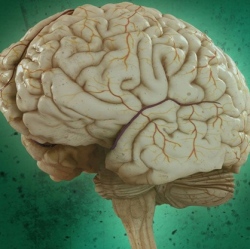
New deep-brain imaging techniques can link the activity of individual, genetically similar neurons to particular behaviors of mice. For the first time, scientists watched as one neuron was activated when a mouse searched for food while a nearly identical neuron remained inactive.
This work, published in the journal Cell, suggests that manipulating an entire genetically defined subtype of neurons to treat a condition, such as binge-eating, might be too broad of an approach. Drug developers might have to focus on one type of cell within the subset to avoid potentially serious side effects. This study, led by Garret Stuber, PhD, assistant professor of psychiatry, is one of the first published reports using novel technologies that support the NIH BRAIN Initiative to map how individual neurons and neural circuits interact throughout the brain.
“Traditional imaging techniques wouldn’t allow us to record this kind of activity deep inside the brains of freely moving mice,” said Stuber, who is also a member of the UNC Neuroscience Center. “For the first time, we can view specific, genetically defined neurons in the lateral hypothalamus as they light up while the mice search out food, eat, and drink.” The finding suggests that targeting an entire subpopulation of brain cells to learn about their functions can be somewhat misleading.
“This is important to know because if we want to create a drug treatment for obesity, for instance, then you wouldn’t want to affect cells involved in appetite because you might affect cells involved in other aspects of motivated behavior,” said Stuber. “But if we could target only the cells involved in consumption, then maybe we could modulate only those cells without affecting motivation.”
